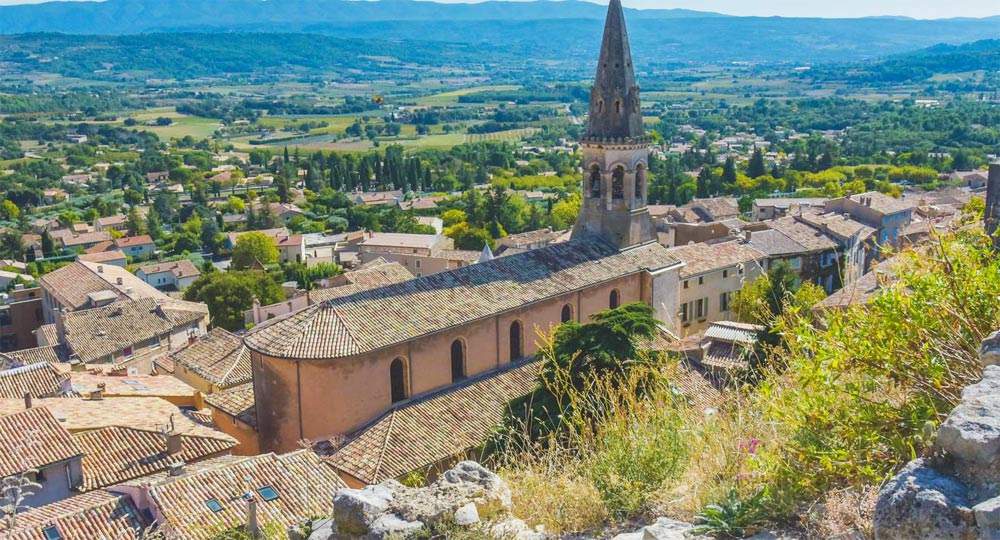France, thousands of churches at risk of decay and abandonment. A report shows what to do
Thousands of churches in France (between two and three thousand) are at risk of degradation because they are either unused, closed or the object of little attention: this is the result of the report on religious heritage presented last July 6 to the French Senate by Senators Pierre Ouzulias (of the French Communist Party) and Anne Ventalon (of the center-right party Les Républicains) and aimed at shedding light on the state of religious heritage. According to the two senators, France, like other Western countries, is grappling with a process of constant secularization of society that is resulting in the risk of abandonment of part of the religious heritage, especially that far from the big cities: protecting it, for Ouzulias and Ventalon, means facing a social challenge, which is particularly crucial for rural territories.
There are about 100,000 places of worship in operation in France, and almost half of them (more than 40,000), for various reasons (especially as an inherited consequence of the French Revolution), are owned by municipal administrations. There are also some 40,000 religious buildings dating from before the 20th century, and 15,000 listed as historic monuments. These are, according to the two senators, true commons to be protected: French churches are almost all in a good state of preservation, although they often suffer from lack of attention, or irregular attention. The report indicates that buildings classified as historic monuments are in better condition than those not in the category, that problems are found more in rural areas than in urban centers, and that the most neglected parts are the interiors of buildings.
There are three main threats that, according to Ouzulias and Ventalon, endanger French churches: the secularization of society and the abandonment of some territories; the decrease in resources available to municipal governments; and mergers between parishes and mergers between municipalities. Then there is the risk (though of lesser magnitude) that buildings will pass into private hands, owners will neglect them, and their demolition will become inevitable. This risk would mainly affect lesser quality heritage, or newer heritage. In addition, municipal governments have to juggle additional issues, starting with the sometimes conflicting relations with parishes and the faithful, the lack of funds for maintenance activities, the scarcity of adequate expertise in small municipalities, and the inability of the central government to take charge of smaller areas. It is a de facto decentralization that affects the management of churches, according to Ouzulias and Ventalon, and this needs to be acknowledged in order to seek solutions at the level of territorial communities.
Actions on religious heritage could be of considerable importance, however, to awaken public interest in the relevance of religious heritage and thus enable communities to reappropriate it, to ensure that this heritage generates economic returns, to ensure that by also giving different uses to abandoned churches, maintenance costs become more bearable.
What to do then? Ouzulias and Ventalon launch their proposals. Meanwhile, there is a need to know the heritage: between now and 2030, it will therefore be necessary for France to launch a major national operation to catalogue the religious heritage in order to have an accurate cartography of it and to equip conservators and insiders with up-to-date and efficient databases. Still, it will be necessary to adopt a national plan for the protection of endangered religious heritage, thus preventing the disappearance of certain types of buildings that are under great threat today. Anchorra, make use of the Conseils d’Architecture, d’Urbanisme et de l’Environnement (CAUEs, bodies that deal with urbanism and architectural and environmental planning) to study solutions for each building, and propose tools, at the departmental level (the departments are assimilated to our provinces) to help municipalities in preventive conservation operations of their religious heritage. It will then be necessary to ensure the openness of the places, resorting to vigilance, including voluntary vigilance, involving young people, improve the security of the movable heritage found inside the buildings of worship (in fact, many objects of great value are not adequately protected from theft and vandalism), develop tourist routes around the religious heritage at the territorial level, and encourage the shared use of these buildings by establishing the rules with conventions between municipal administrations, parishes and dioceses.
Image: Saint-Saturnin-lès-Apt. Photo by Pays d’Apt Luberon Tourisme.
 |
| France, thousands of churches at risk of decay and abandonment. A report shows what to do |
Warning: the translation into English of the original Italian article was created using automatic tools. We undertake to review all articles, but we do not guarantee the total absence of inaccuracies in the translation due to the program. You can find the original by clicking on the ITA button. If you find any mistake,please contact us.





























